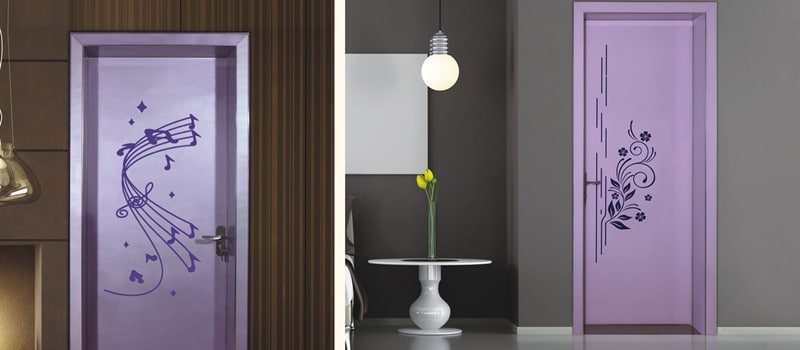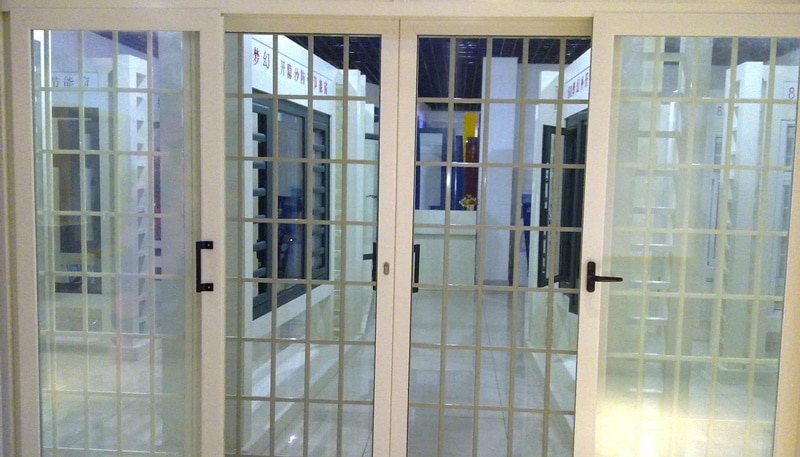What are fiberglass doors?

Fiberglass doors are a type of entry door made from a composite material that combines glass fibers and resins, creating a strong, durable, and low-maintenance option for homeowners. They are designed to mimic the appearance of traditional wood doors but offer additional benefits such as energy efficiency, weather resistance, and lower maintenance requirements.
Are fiberglass doors good?
Fiberglass doors can be a good option for many homeowners, depending on their needs and preferences. Here are some advantages of fiberglass doors:
- Durability: Fiberglass doors are known for their strength and resistance to wear and tear. They are less likely to dent or warp than wood doors resistant to harsh weather conditions like rain, snow, and extreme temperatures.
- Low Maintenance: Fiberglass doors are relatively low maintenance compared to wood doors. They don’t require regular painting or staining and are easy to clean with just soap and water.
- Energy Efficiency: Fiberglass doors can be designed with insulated cores, which can help improve energy efficiency and reduce heating and cooling costs.
- Versatility: Fiberglass doors come in various designs, styles, and finishes. They can mimic the appearance of wood, making them an attractive option for those who want the look of wood without maintenance.
- Security: Many fiberglass doors are equipped with strong locks and security features, providing enhanced security for your home.
- Moisture Resistance: Fiberglass doors are highly moisture-resistant, making them an excellent choice for areas with high humidity or coastal regions.
However, like any product, fiberglass doors also have some disadvantages:
- Cost: Fiberglass doors can be more expensive than some options, such as steel doors. The price can vary based on the quality, design, and features.
- Scratch Vulnerability: While fiberglass is generally durable, it can be susceptible to scratching, especially in lower-quality doors.
- Limited Customization: Fiberglass doors may have fewer customization options than wood doors, especially if you’re looking for unique designs or custom sizes.
- Painting Limitations: While fiberglass doors can be painted, they might not hold paint as well as wood, so choosing the right type of paint and following proper preparation techniques is essential.
Ultimately, the suitability of a fiberglass door depends on your specific needs, budget, and the overall aesthetic you desire for your home. Fiberglass doors can be an excellent choice if durability, low maintenance, and energy efficiency are essential factors for you. However, it’s always a good idea to consult with a professional or visit a showroom to see and feel the doors before deciding.
What are fiberglass doors made of?

Fiberglass doors are made from a composite material that combines glass fibers and resins, creating a strong, durable, and low-maintenance option for homeowners. The manufacturing process typically involves the following steps:
- Glass fibers: Fine strands of glass are woven together to create a strong and flexible material. These fibers provide structural reinforcement and help make the door resistant to warping, cracking, and denting.
- Resins: The glass fibers are combined with polyester or epoxy resins, which act as a binder and help create a strong, rigid composite material. The resin contributes to the door’s durability, weather resistance, and low-maintenance properties.
- Door core: Fiberglass doors often have a core made of foam insulation, such as polyurethane foam. This core provides additional insulation and energy efficiency, making fiberglass doors more effective at maintaining a comfortable temperature inside the home.
- Door skins: The door’s outer layers, or “skins,” are made from fiberglass composite material. These skins can be molded to replicate the appearance of various wood grains and finishes, giving homeowners the look of a traditional wood door without the associated maintenance requirements.
- Finishing and assembly: The door components are assembled, and the door is finished with paint, stain, or a protective coating. Hardware, such as handles and locks, can be added at this stage or after installation.
The combination of glass fibers and resins in a fiberglass door results in a strong, durable, and weather-resistant door that offers the benefits of low maintenance and energy efficiency while still providing an attractive appearance similar to traditional wood doors.
What paint to use on fiberglass doors?

When painting a fiberglass door, it’s essential to use the appropriate paint and follow the correct process to ensure a long-lasting, professional-looking finish. Here are some general guidelines for painting fiberglass doors:
- Primer: Use a high-quality acrylic or latex primer for fiberglass or exterior surfaces. This will provide a strong bond between the door surface and the paint, ensuring good adhesion and durability.
- Paint: Use high-quality acrylic latex or 100% acrylic exterior paint suitable for fiberglass surfaces. These paints are durable, flexible, and resistant to fading, cracking, and peeling, making them ideal for fiberglass doors.
- Finish: Choose a semi-gloss, satin, or gloss finish based on your preference. Semi-gloss and gloss finishes are more durable and easier to clean, while satin finishes offer a softer appearance. Remember that the higher the gloss level, the more visible imperfections may be on the door surface.
Before painting your fiberglass door, follow these steps:
- Clean the door: Remove any dirt, grease, or grime from the door surface using mild detergent and water. Rinse thoroughly and allow the door to dry completely.
- Sand the door: Lightly sand the door with fine-grit sandpaper (e.g., 220-grit) to create a slightly rough surface for better paint adhesion. Wipe the door with a tack cloth or damp rag to remove dust or debris after sanding.
- Apply primer: Apply the primer evenly, following the manufacturer’s instructions. Use a high-quality brush or a foam roller to minimize brush marks and ensure a smooth application. Allow the primer to dry completely, as per the recommended drying time on the product label.
- Lightly sand the primer: After completely drying, lightly sand the surface with fine-grit sandpaper to ensure a smooth finish. Remove any dust or debris with a tack cloth or damp rag.
- Apply paint: Use a high-quality brush or foam roller to apply the acrylic latex or 100% acrylic exterior paint. Apply the paint in thin, even coats, and allow each coat to dry according to the manufacturer’s instructions before applying the next coat. Typically, two coats of paint will provide sufficient coverage and a smooth finish, but you may need additional coats depending on the paint color and desired opacity.
- Allow the paint to dry: Once the final coat of paint is applied, allow the door to dry completely before reattaching any hardware or reinstalling the door. Follow the manufacturer’s recommendations for drying time.
Using the appropriate primer and paint and following the correct preparation and painting process, you can achieve a durable, attractive finish on your fiberglass door that will last years.
What is better, steel or fiberglass doors?

When choosing between steel and fiberglass doors, it’s essential to consider factors such as durability, energy efficiency, maintenance, aesthetics, and cost. Each material has its advantages and drawbacks, and the best choice for you will depend on your specific needs and preferences.
Steel doors:
Advantages:
- Strength and security: Steel doors are very strong, making them an excellent choice for home security. They are difficult to break through and can be paired with high-quality locks and security systems.
- Cost: Steel doors are generally more affordable than fiberglass, making them an attractive option for budget-conscious homeowners.
- Low maintenance: Steel doors require minimal maintenance, as they are resistant to warping, rotting, and insect infestation.
Disadvantages:
- Energy efficiency: While steel doors can provide insulation, they are generally less energy-efficient than fiberglass doors, leading to higher energy costs.
- Durability: Steel doors can be susceptible to dents, scratches, and rust, especially in moist or humid climates.
- Aesthetics: Steel doors are more industrial and may be less visually appealing than fiberglass or wood.
Fiberglass doors:
Advantages:
- Durability: Fiberglass doors are resistant to warping, rotting, and rusting, making them long-lasting and less susceptible to damage from the elements.
- Energy efficiency: Fiberglass doors offer better-insulating properties than steel doors, helping regulate your home’s temperature and lowering energy bills.
- Low maintenance: Fiberglass doors require very little upkeep and can maintain their appearance without regular painting or sealing.
- Aesthetics: Fiberglass doors can be designed to imitate the look of various wood types and finishes, providing an attractive option for homeowners who want the appearance of a wood door without maintenance.
Disadvantages:
- Cost: Fiberglass doors are often more expensive than steel doors.
- Limited styles: Fiberglass doors may not offer the same variety of designs and customizations as other materials.
Ultimately, the better choice between steel and fiberglass doors depends on your priorities, such as security, energy efficiency, maintenance, aesthetics, and budget. A steel door might be better if security and affordability are your main concerns. If you prefer a more energy-efficient, low-maintenance door with the appearance of traditional wood, a fiberglass door could be the right choice.
Which type of door lock is best for fiberglass doors?

When choosing a door lock for a fiberglass door, it’s essential to prioritize security, durability, and compatibility with the door’s material. The best type of door lock for fiberglass doors will depend on your specific needs and preferences, but here are some options to consider:
- Deadbolt locks: Deadbolt locks are among the most secure and commonly used locks for residential entry doors, including fiberglass doors. A single-cylinder deadbolt features a keyhole on the exterior side and a thumb turn on the interior side. A double-cylinder deadbolt requires a key on both the exterior and interior sides, providing an extra layer of security but may pose a safety concern during emergencies as it can hinder quick exits.
- Electronic or smart locks: They provide keyless entry and added convenience, as they can be unlocked using a code, fingerprint, smartphone app, or smart home integration. These locks often come with built-in deadbolts, providing high security. Ensure that the lock you choose is compatible with your fiberglass door and has a good reputation for durability and performance.
- Mortise locks are another option for fiberglass doors, typically used in high-security applications or commercial settings. These locks feature a rectangular lock body installed into a cutout in the door’s edge, providing enhanced security and durability. However, mortise locks can be more complex and expensive to install than other types.
- Keyed entry knobs or levers: While not as secure as deadbolt locks, keyed entry knobs or levers can provide an additional layer of security when combined with a deadbolt. These locks have a keyhole on the exterior side and a push or turn button on the interior side, allowing the door to be locked inside and outside.
When selecting a lock for your fiberglass door, look for high-quality materials, construction, and a reputable brand. Consider the security features, ease of installation, and compatibility with your door’s design and thickness. Ultimately, the best type of lock for your fiberglass door will depend on your security needs, budget, and preferences.

